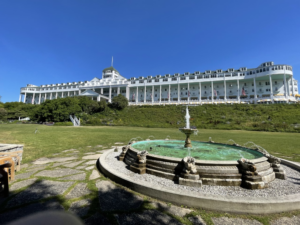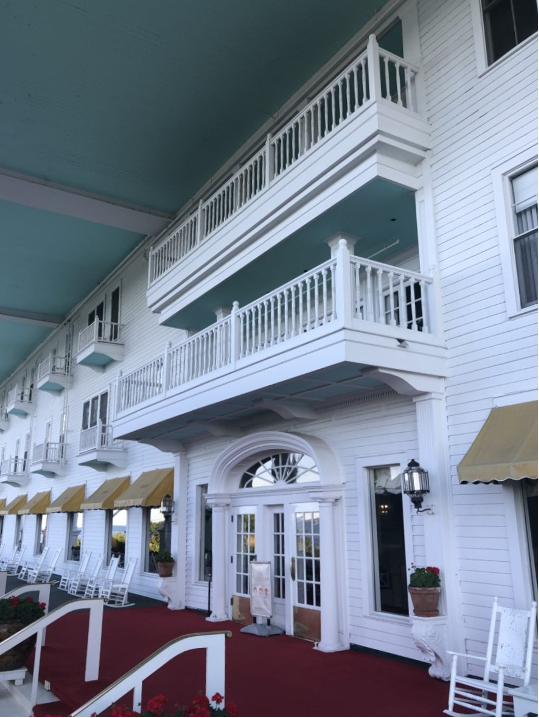
Balance and order are hallmarks of the Christian life. Indeed, we hear that we are to be in the world but not of the world. Those who only think of this world are doomed to secular nihilism. Those who think only of the next are unable to feed and clothe themselves. Order enables members of a society to live together in peace and mutual respect.
Our modern world only pays attention to extremists. It ignores and even ridicules balance and order. Even in the world of leisure and recreation, we fill our time off with a non-stop series of frenetic experiences. Many return home more exhausted than they were when they left. The return to work becomes a kind of break from the rigors of the vacation.
Perhaps it is time to reconsider the word recreation. Separate the syllables, and the meaning is obvious. It is a time to be created anew – to “vacate” the hustle and bustle of daily life and regain energy, health, and perspective.
A Re-Creative World
I had the joy of just such a vacation recently.
Help Remove Jesus Bath Mat on Amazon
The location was idyllic – the Grand Hotel on Mackinac Island, Michigan.
The first thing that people usually notice about the Island is that one cannot drive there. You get there on a ferry boat. On arrival, you quickly see that there are no motor vehicles. The “horseless carriage” was banned there in 1898 because it scared the horses. One walks, bicycles, or rides in a horse-drawn carriage.

The absence of motorized transportation – other than a single ambulance – works little hardship. The Island covers only 4.35 square miles. An 8.2-mile-long paved road runs around its circumference. The Michigan State Parks Commission owns over eighty percent of the Island; that area is undeveloped.
A Strong Catholic Presence
Like much of the Great Lakes region, the first Europeans to arrive there were Jesuit missionaries. For the Island, that missionary was Fr. Claude Dablon, S.J., who spent – or rather endured – the winter of 1670 there. Father Dablon’s successor was the famous missionary-explorer Jacques Marquette, who moved the mission to the Upper Peninsula, naming his mission Saint Ignace after Saint Ignatius of Loyola.

In 1671, the Island was described in Relations des Jésuites de la Nouvelle-France. “[I]ts fisheries, its phenomena of wind and tide, and the tribes who, now and in the past, have made it their abode. A favorite resort for all the Algonkin (sic) tribes, many are returning to it since the peace with the Iroquois. On this account, the Jesuits have begun a new mission, opposite Mackinac, called St. Ignace. Thither have fled the Hurons, driven from Chequamegon Bay by fear of the Sioux, “the Iroquois of the West.”
Satanic Christ Porn-blasphemy at Walmart — Sign Petition
In 1715, the French constructed a fort on the Lower Peninsula and founded the parish church of Ste. Anne. When the British conquered and then abandoned that fort, they floated the church building over to Mackinac Island. The Parish replaced that building in 1874, but the State of Michigan reconstructed it as part of the re-built Fort Michilimackinac in the early sixties. Ste. Anne’s Parish on the Island is still active and maintains records going back to 1695.

The roughly one square mile of developed area can be divided into four parts. A small village is replete with tourist shops (fudge is a local specialty), restaurants, small hotels, and ferry docks. For the most part, the village is surrounded by “cottages,” most of them – including the official Governor’s Mansion of the State of Michigan – were built during the late nineteenth century. The third area is a restored British fort built during the American War for Independence and subsequently used as a U.S. Army post until 1895.
The Grand Hotel, which is a kind of trademark for the Island, occupies the last area. The Hotel, painted bright white and faced by a 660-foot front porch – supposedly the longest in the world – can be seen from the ferries long before reaching their Island berths.

Stepping into Tradition
A consortium of two railroads and a steamship line initially financed the Hotel’s construction to spur tourism, opening in 1887. Originally built entirely of Michigan white pine, its survival is remarkable. Not only was it spared from fire – a sophisticated sprinkler system is there today – but it also faced bankruptcy several times until becoming prosperous after World War II.
Indeed, the age and architecture are part of the place’s charm, but it is no mere museum. The Grand Hotel is a living, breathing space – a chance to enter history. You can walk through the Hotel’s public areas and see an abundance of historical photographs – several including Presidents of the United States – and then go into the lobby (“Parlor” in Grand Hotel usage), the Dining Room, or onto the porch and do precisely what those tourists did a century ago. Players have used the golf course continuously since 1898.
In a world obsessed with modernity, it is refreshing to see an organization that protects and celebrates its traditions.
The Grand Hotel maintains nineteenth-century traditions in yet one more way. The Hotel’s website informs potential visitors: “Because every evening at Grand Hotel is a special occasion, after 6:30 PM in main areas of the Hotel and after 5:30 PM the Main Dining Room, dresses, skirts, blouses, dress sweaters, and dress slacks for ladies are preferred, while gentlemen are required to wear a suit coat, necktie, and dress pants (no denim or shorts). This applies for all areas inside the Hotel including the Parlor, Lobby, Terrace, and Main Dining Room, with the exception of the Cupola Bar. Children 12 years and older are expected to be in dress similar to adults.”
The management means every word of their dress code. It exerts a profound civilizing effect. The guests were clearly enjoying themselves, but the tone of the conversations was low, respecting the ability of my little family to drink in the ambiance and take joy in each other’s companionship. Perhaps the most common expression was “excuse me” as people circulated through the public areas.
As my wife, daughter, and I strolled into the Parlor from the “Salle à Manger” (as the antique lettering over the Dining Room door states), we were delighted to find a harpist providing a delightful background for the various conversations in the massive space.
The Confluence of Natural and Man-Made
Another aspect of the Hotel is its remarkable setting. The entire porch and many guest rooms offer stunning views of Lake Huron and the Mackinac Bridge, spanning the straits between Michigan’s Upper and Lower Peninsulas. The lawns are expansive and lush. Flower gardens abound.

Perhaps the most remarkable thing about Mackinac Island is its balance between the Works of God and the works of man. Although overnight camping is not allowed, the four-fifths of the island occupied by the State Park are essentially pristine. The views of Lake Huron are spectacular, although swimming in their cold water is only for the hardy. The village is quaint and charming and especially suited to a nighttime ramble after the day tourists have retreated.
Those who demand the frenetic activity of the modern vacation may be disappointed. For those who wish for a world of quiet charm, this orderly world is the perfect place for modern man’s often over-stressed soul. It is, indeed, re-creation in the best sense of the word.
Even my teenaged daughter wants to return.


